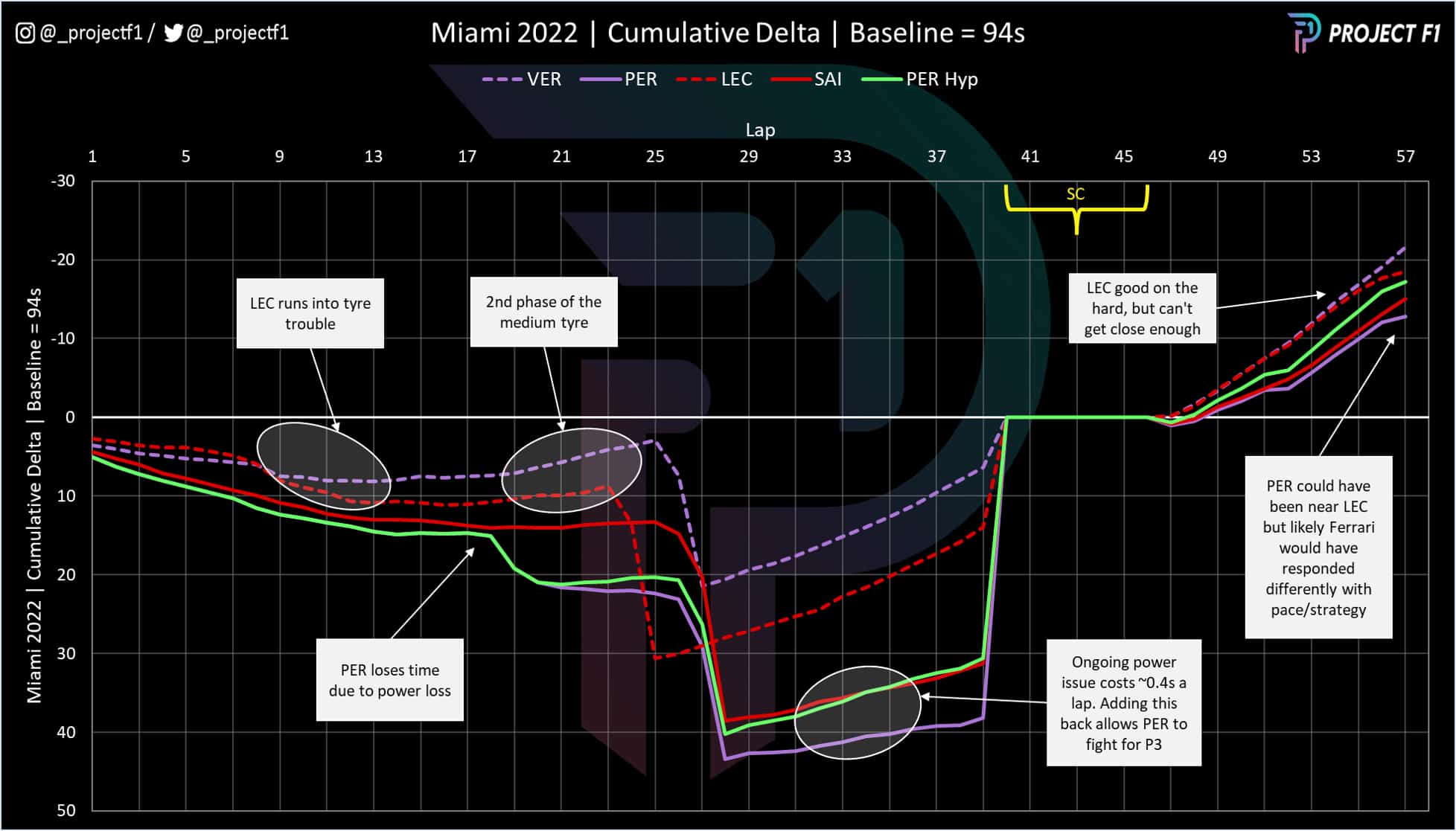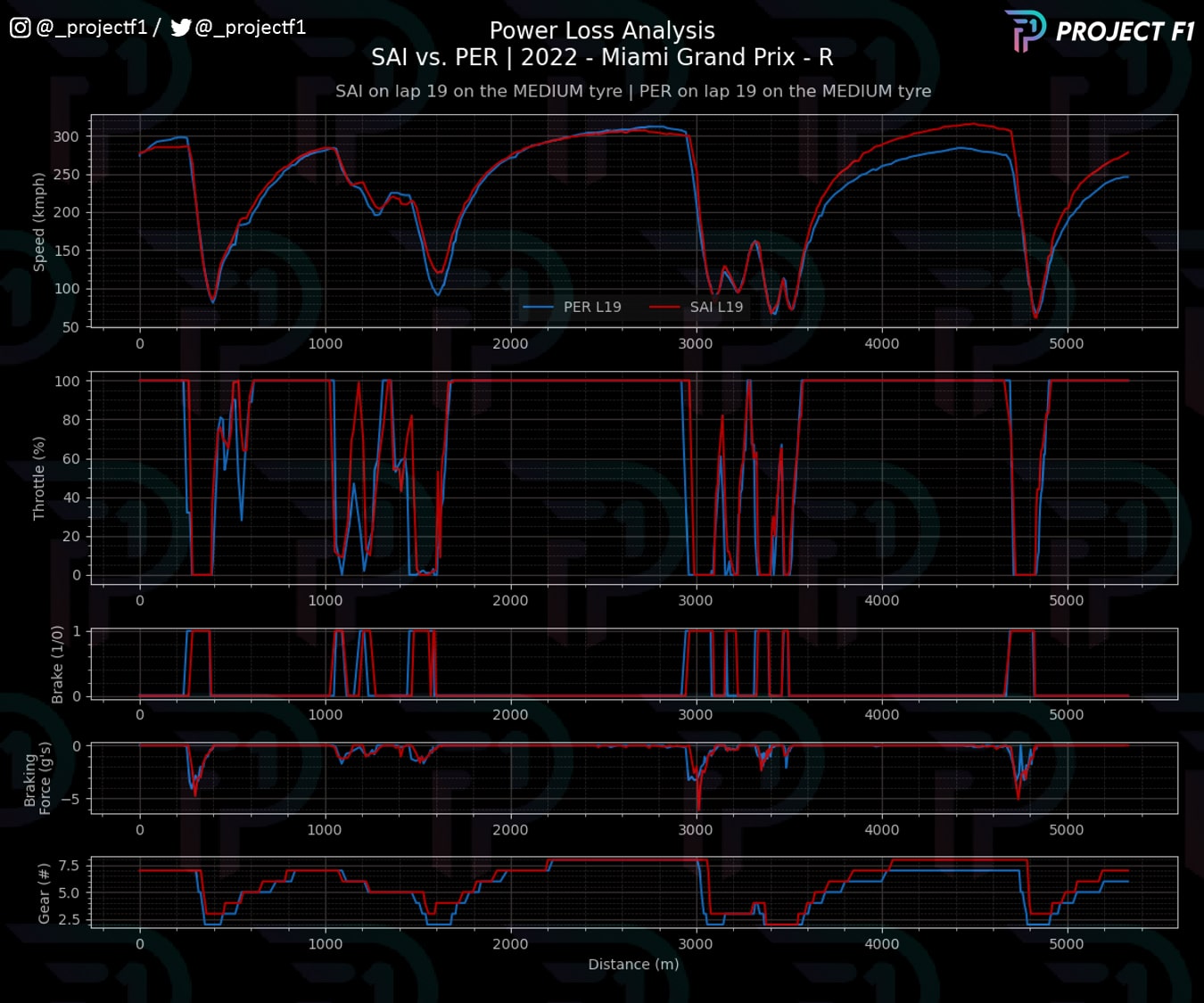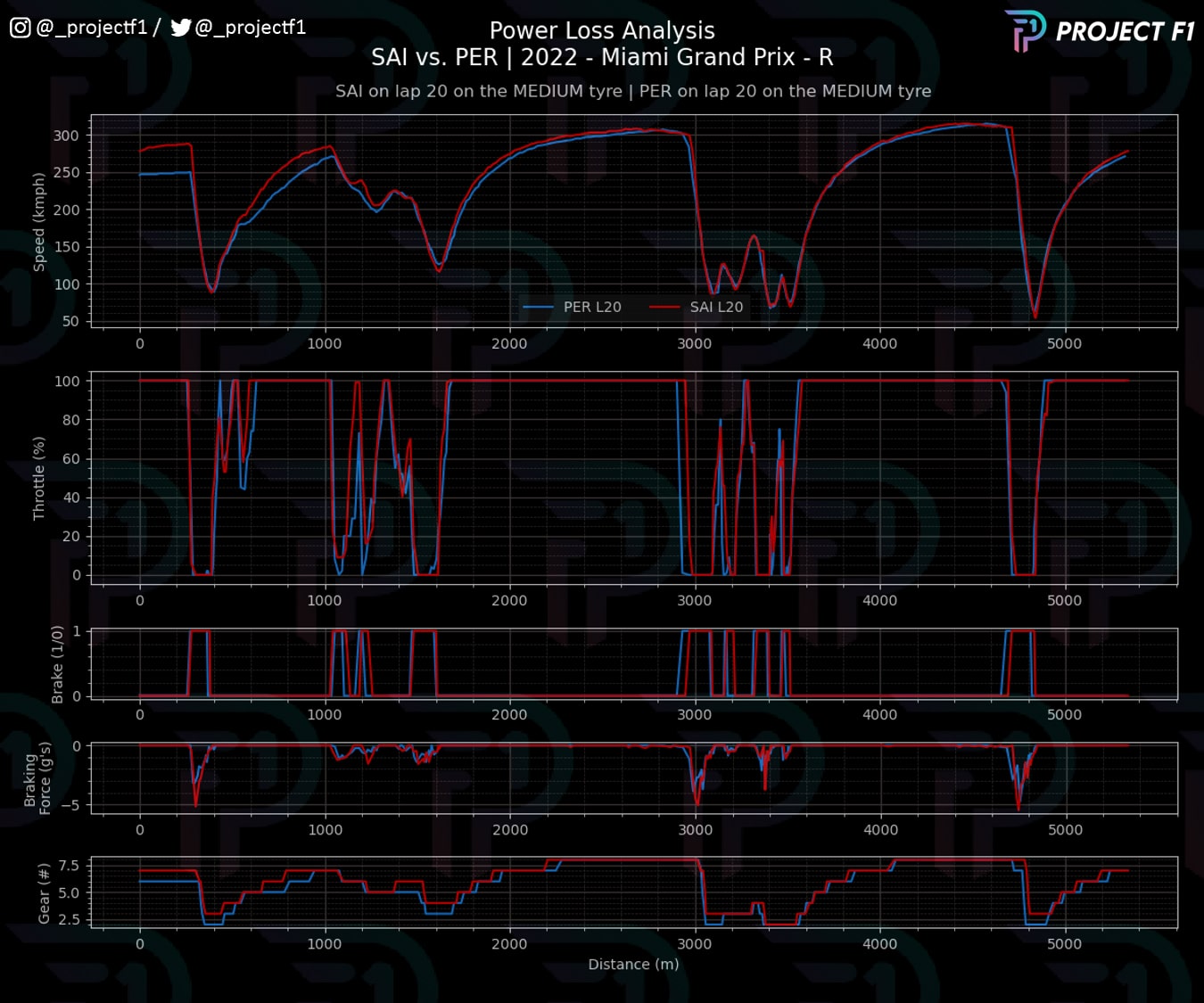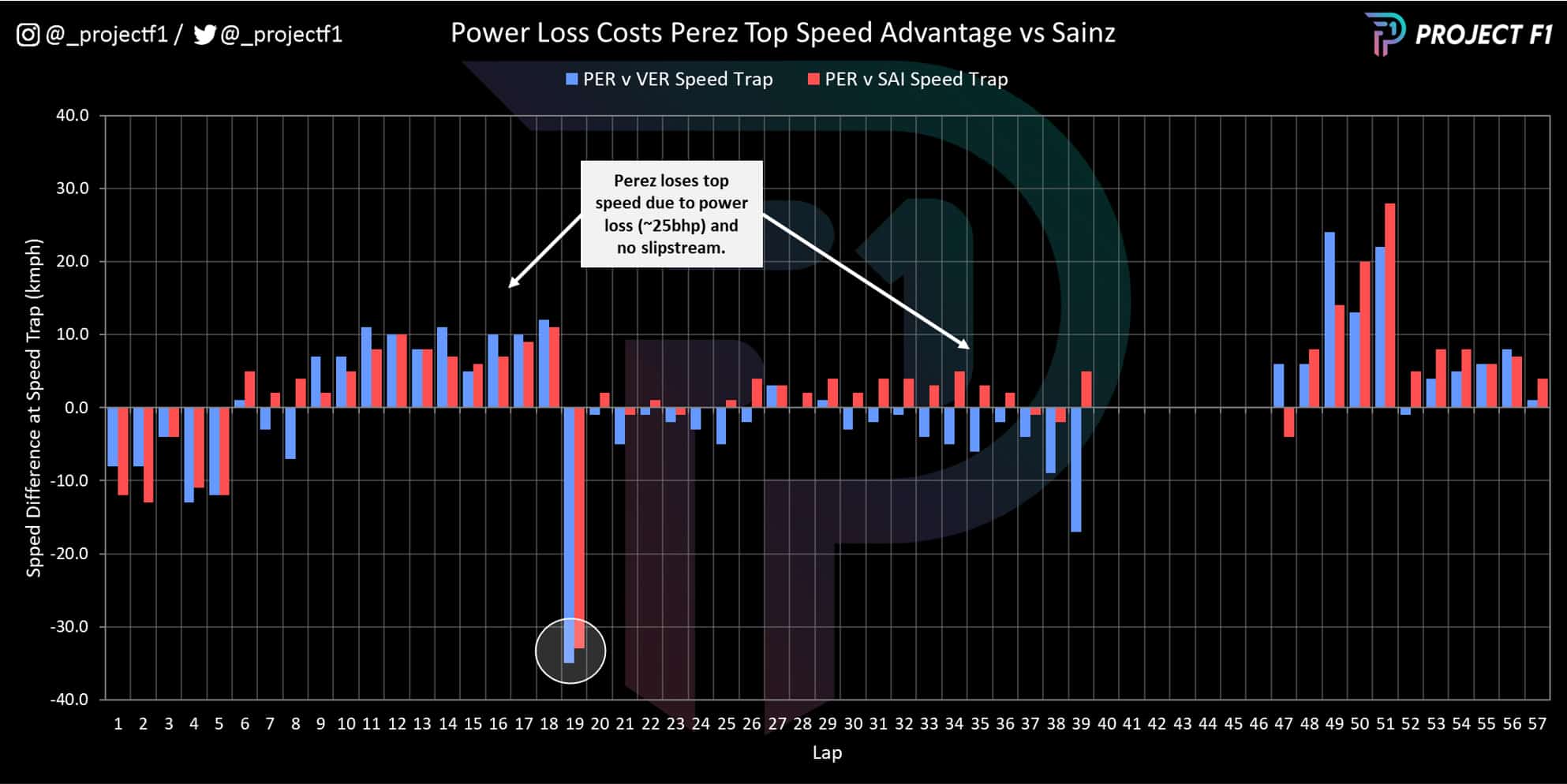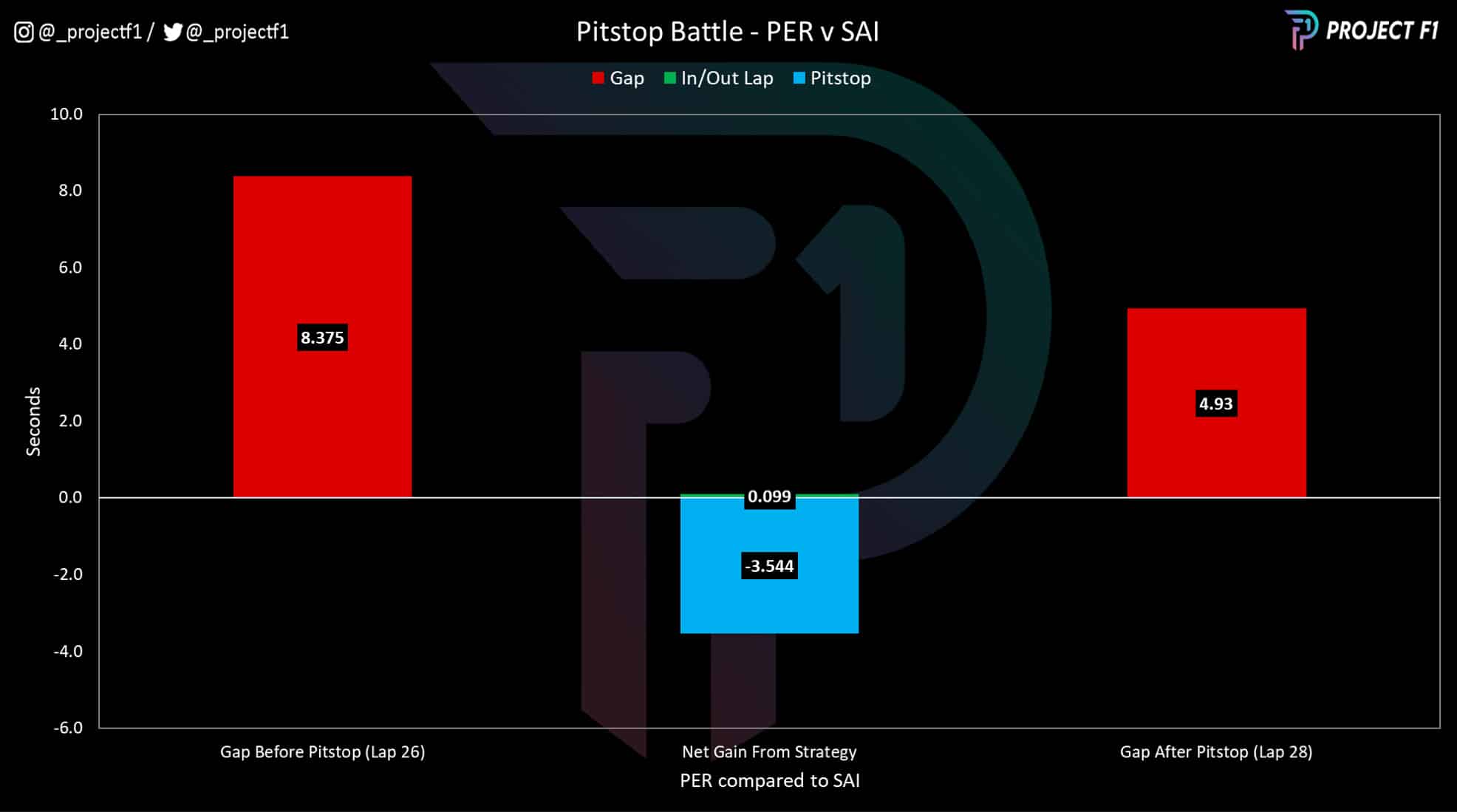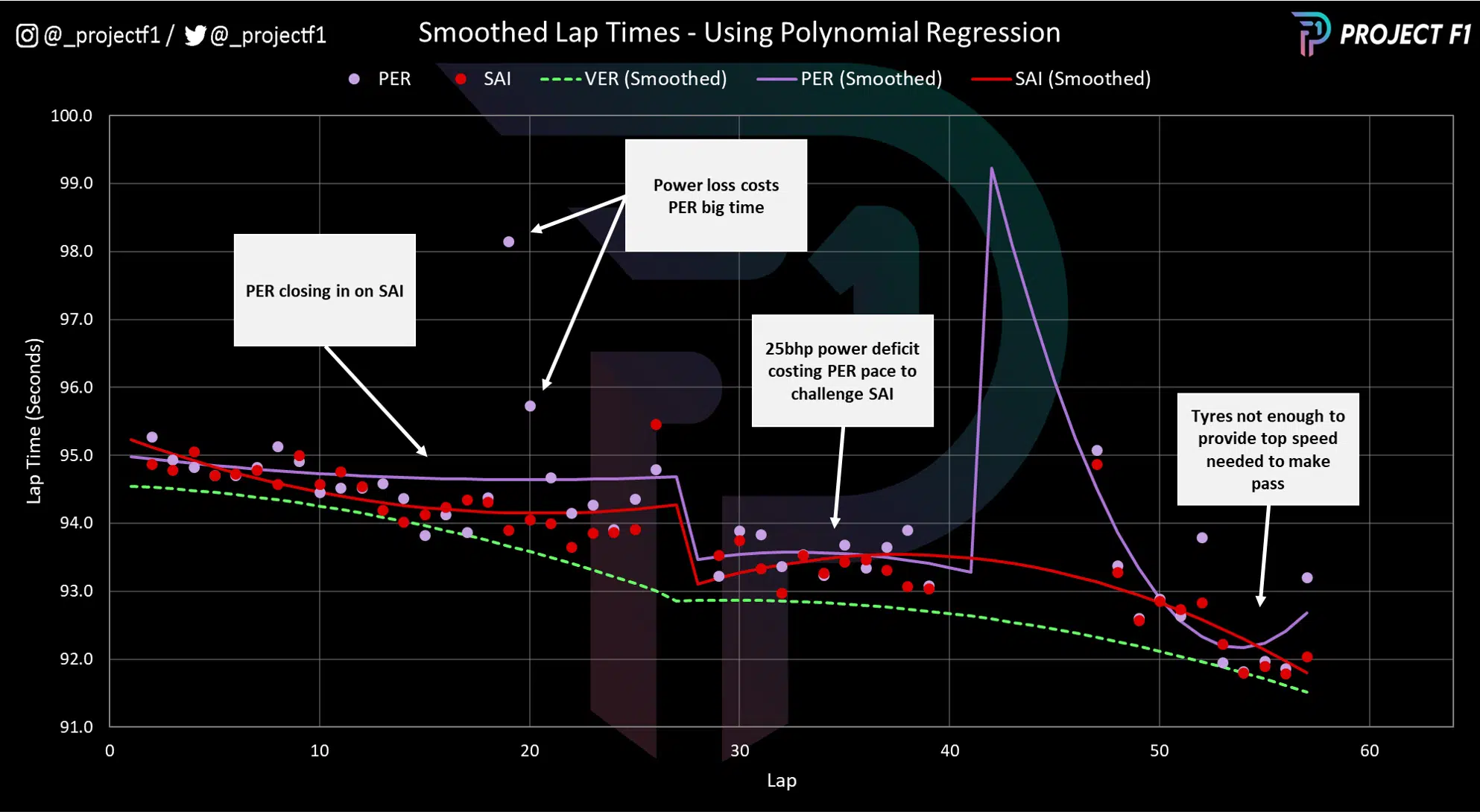Red Bull could have had 1-2 finish in Miami without Perez power loss — data analysis
Sergio Perez claimed that a loss of power cost him the chance of finishing second in the 2022 Miami Grand Prix. Analysing the data, shows he could well be right
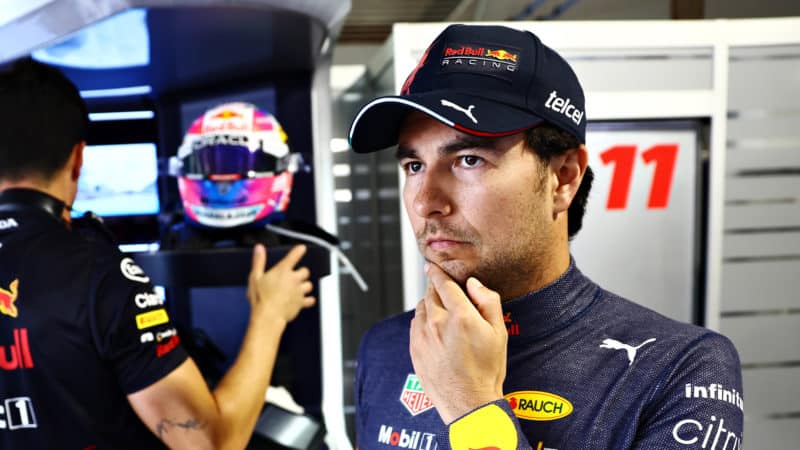
Mark Thompson/Getty Images
“I think we lost another one-two today, to be honest,” said Sergio Perez as he rued a mid-race loss of power, hampering his efforts to progress from fourth place in the Miami Grand Prix.
The Red Bull driver was within DRS range of third-placed Carlos Sainz by lap 18, then dropped back significantly, complaining of power loss.
Although the situation improved, he was still 30bhp down, according to team boss Christian Horner. He blamed a sensor issue and also suggested that Perez could have finished second.
Analysis of the race data by Project F1 shows that Horner may well be right. Perez was fast enough to finish on the podium if it wasn’t for the reduced performance, which mainly affected him on the straights.
It wouldn’t have been straightforward though: Ferrari’s response to a pacier Perez could have given the Miami Grand Prix the extra pinch of spice that it needed, and so the the drop in power may well have been our loss too.
Scroll down for the telemetry and timings that show what might have been.
Miami GP in one graph: the frontrunners
Red Bull carried the momentum into Miami after Max Verstappen won the grand prix, sprint race and took the fastest lap at Imola.
But after his interrupted practice sessions in Florida, Ferrari claimed the strategic advantage by locking out the front row.
The graph above shows why it wasn’t enough to win on raceday. It plots the drivers’ cumulative lap times compared to the average 1min 34sec lap time of the leader, which helps us to see the differences in performance between each driver.
For example, after five laps, each driver’s race time so far is compared with five of the average laps: as expected, the heavily-fuelled cars are all slower than the baseline at this point.
Verstappen vs Leclerc
It was nip and tuck for Verstappen and Leclerc during the opening phase of the first stint. However, it soon became apparent that the Red Bull had the better race pace. This became clear as Leclerc’s tyres started to drop off.
The Monégasque was falling into the hands of his teammate until a second wind from the medium compound to bring him closer to the front. By this time Verstappen had gathered a healthy margin to his main title rival to rest easy against any strategic manoeuvres from Ferrari.
Sainz vs Perez
Further back, Perez was trailing Sainz for longer but was on the Spaniard’s gearbox by lap 18. But suddenly the Mexican experienced a power loss that cost him about 5 seconds over the next two laps, putting him out of the fight.
Although the situation improved, he was still down on power for the rest of the race, costing him an estimated 0.4sec per lap (he was 0.4sec down on Verstappen before lap 19 and 0.8 down afterwards). The green line shows his hypothetical performance without the issue. It puts him ahead of Sainz and in close proximity to Leclerc….
When Sainz lost power
It’s clear why Perez sounded so anguished over the radio on lap 19. The blue line on the telemetry above shows Perez’s speed suddenly diverging from the red line of Sainz.
Until then, Perez must have been confident that he’d be past Sainz before long. Note his speed advantage early in lap 19, approaching Turn 1 where much of the overtaking took place. He was quicker too towards the end of the first long straight, heading into Turn 11, aided in both cases by Sainz’s slipstream.
The dramatic power loss on the next straight is obvious, the problem bleeding into lap 20, shown on the telemetry chart above, and costing valuable time.
Having fallen back, Perez lost the additional benefit of the slipstream and was not able to make use of the Red Bull’s straight line speed advantage against Sainz.
Perez’s speed advantage
The lines above illustrate how Perez’s pace compared with Verstappen (blue line) and Sainz (red line). It’s taken from the speed trap at the end of the long straight up to Turn 17.
Conserving his tyres at the start, his pace is slower than both for the first five laps, but then picks up as he closes the gap to Sainz… until lap 19. His continuing loss of power is evident in the following laps, as he’s slower than his team-mate and has a reduced advantage over the Ferrari.
His situation appears to improve after the blank section during the safety car period, but in reality his advantage should have been even greater, due to his stop for fresh medium tyres, while those around him remained on their well-used hards.
The recovery is down to the slipstream and grip advantage via better traction from the medium tyre. Given the Red Bull’s (especially Perez’s) performance in Sector 3, being down on power was particularly costly in being able to set up for an overtaking move.
Pitstop gain for Perez
Perez’s troubles meant that he was unable to make Sainz pay for Ferrari’s slow pitstop. He gained 3.544sec on the Spaniard after both drivers had made their stop.
Miami GP lap time trends
Comparing the lap time data between Sainz and Perez shows that both drivers were neck and neck, albeit off the pace of the race leader.
The line is smoothed to account for anomalies and as Perez’s power anomalies were sizeable, that distorts the trend line so his first stint looks much worse than Sainz.
The second stint is more representative, with Perez matching Sainz’s lap times despite being down on power. So a full potential Perez should have had better pace, similar to Verstappen’s advantage we saw over Leclerc.
Revisit the chart at the top of the page and the hypothetical green line that we might have expected Perez’s race to follow with a fully-functioning power unit. This shows him in a position to challenge Sainz in the middle of the stint, and then to potentially attack Leclerc.
The verdict
So, in theory, yes, Perez he could have finished second. Whether it would have happened depends on if Ferrari’s strategy had remained the same. This sort of scenario could well have triggered a different approach, particularly under the safety car, where both Ferraris remained on their hard tyres.
Perhaps Sainz would have taken a different strategy and come back at Perez. We could look at the different scenarios here but we would never know.
In any case, the data gives another view into the impressive race pace of the latest-spec Red Bull, particularly at Miami, where the long straights favoured its design philosophy.
While the case can be made for this to be a tactical loss for Ferrari, the next two races in Barcelona and Monaco are likely to suit its car better, and are likely to be crucial, not just in terms of points, but also in the development of the car.
Ferrari is yet to show its hand when it comes to major upgrades, and there is much further to go in the 2022 season.
Project F1 turns data into graphics that uncover race pace and strategy
See more analysis at @_ProjectF1 on Twitter or @_ProjectF1 on Instagram
